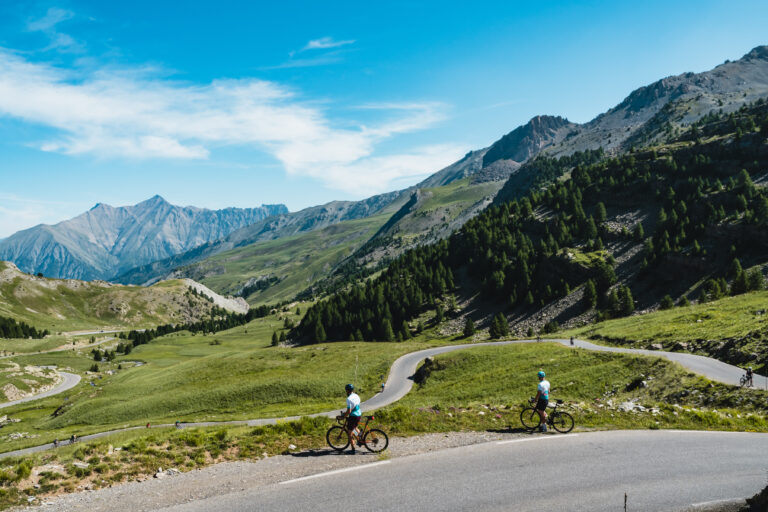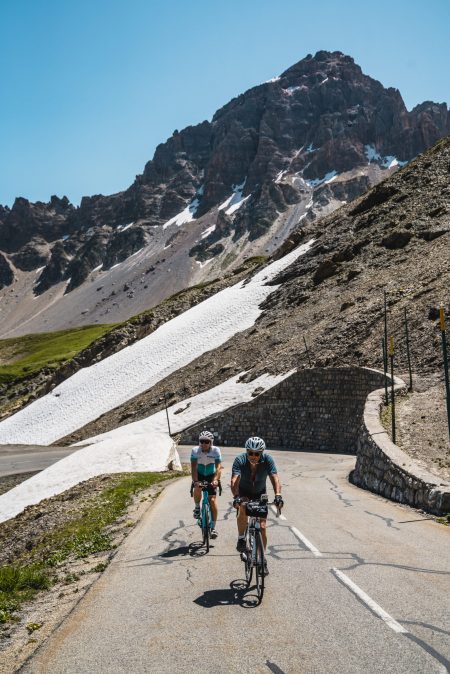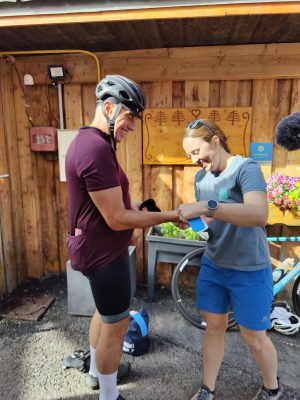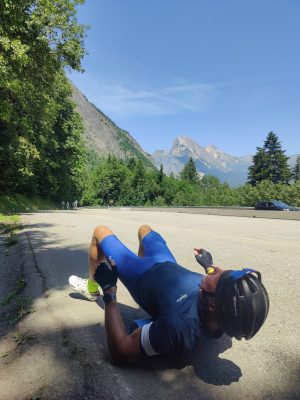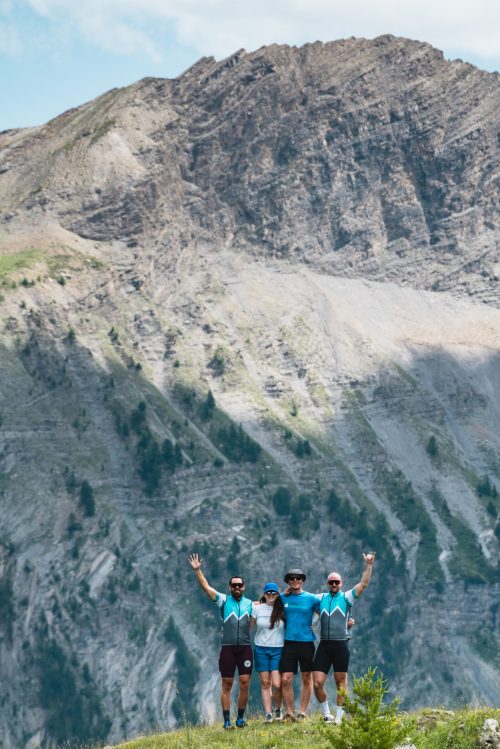Introduction
There’s something undeniably epic about cycling through the French Alps. The air gets thinner, the roads narrower, and the climbs more punishing—but the rewards are equally immense. This summer I had the privilege of working as the team doctor for a group of fifteen friends on a mission to cycle from Geneva to Nice. This seven day trip saw the group of 60 something year old men, of varying cycling experience, pedal through some of the most legendary climbs in cycling history through the heart of the French Alps.
The trip was run by More Adventure, a company owned and directed by my husband, Tom, who has over 15 years of experience organising incredible group cycling adventures. We were joined by two of Tom’s highly experienced cycle leaders, Ben and Rhys, as well as trip photographer, Gwil.
Having worked on many trekking and mountaineering expeditions, this was my first time supporting a road cycling event so I was a little nervous. Despite the obvious overlap in pre-hospital and wilderness medicine skills, it was a huge learning experience for me and I had great fun along the way!
The Route: Geneva To Nice – A True Alpine Odyssey



Starting from the lakeside calm of Lake Geneva, the group headed south, tackling iconic climbs that have humbled even Tour de France pros: Jambaz, Col de la Colombière, Col du Marais, Cormet de Roselend, Col de l’Iseran (the highest paved pass in the Alps), Col du Telegraphe, Col du Galibier, Col de Vars, and finally, the serpentine beauty of Col de la Bonette.
Each day was a test of both physical endurance and mental strength. Legs burned, lungs gasped, and minds wandered—yet every summit reached was a triumph shared.
Preparing For Adventure
Our preparation began long before the riders clipped into their pedals. I conducted medical screenings prior to the trip and most of the participants had checkups with a cardiologist which included exercise stress testing.
I assembled a mobile medical kit complete with trauma kit such as a pelvic binder and a femoral traction splint, Penthrox, as well as IV fluids, a defibrillator, and medications for everything from severe allergic reactions to gastrointestinal issues. The high-mountain terrain poses unique challenges: rapid weather changes, extreme heat and increased risk of injury due to fatigue and terrain.
The heat was one of my biggest concerns as temperatures were reaching the 30s by early afternoon so having a strategy and equipment to prevent and manage heat related illness was critical. We got on the road early each morning to try to finish our climbs before the hottest parts of the day. The support team provided shade using a gazebo at our road side rest stops and we made sure cold drinks and plenty of water refills were regularly available. I also took equipment to allow us to rapidly cool someone if they showed any signs of worrying exertional heat illness.
The maximum altitude our riders reached was about 2800m so although altitude illness is uncommon at this height, it is certainly possible, especially with heavy physical exertion so this was another factor to consider.
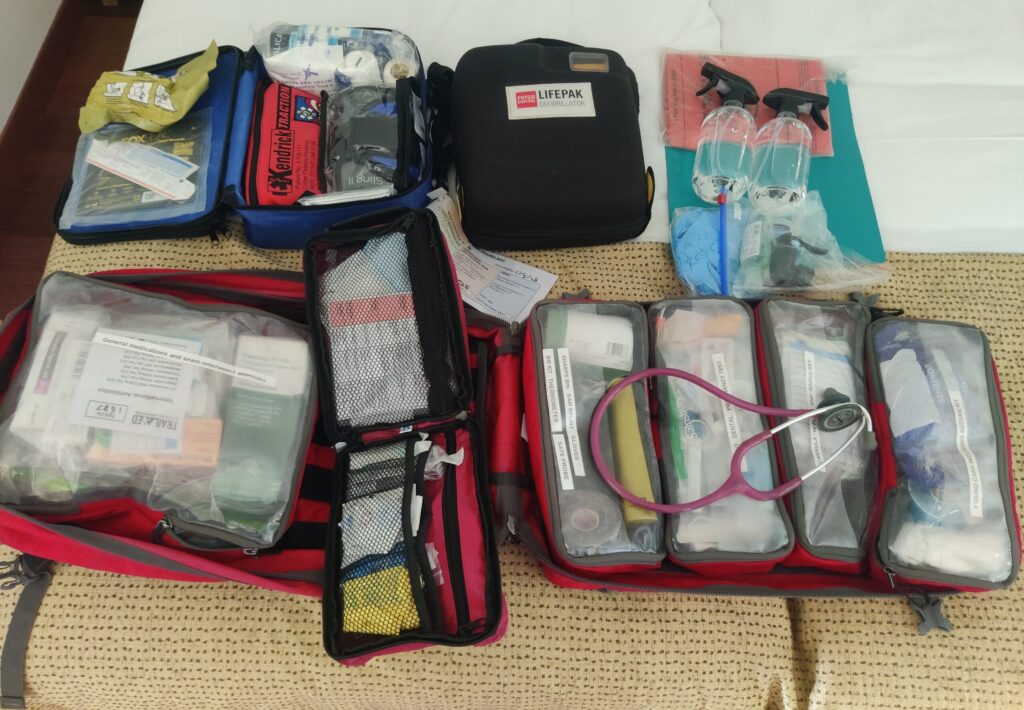
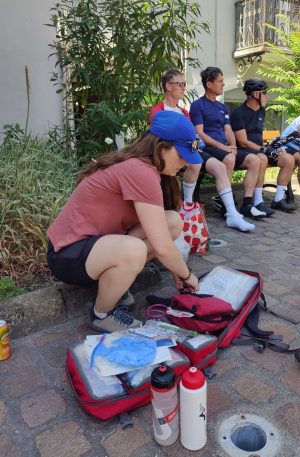
Medicine On The Move
Medical support on a cycling tour is dynamic and unpredictable. Each day, I chased the riders in a support van, leapfrogging them to key checkpoints and working in close communication with the rest of the team. The terrain was unforgiving—narrow hairpins with sheer drops, sudden thunderstorms, and long stretches without access to medical facilities. Our role was reactive as well as preventative.
Some of the issues I treated included:
- Saddle sores – heat, sweat, friction and pressure provides the perfect environment for skin issues. Prevention is key when it comes to saddle sores, but on such a long and challenging ride, some issues are probably inevitable. One rider unfortunately developed open sores quite early on which required daily dressing. I used a thin layer of sudocreme, Mepitel (similar to Jelonet – a soft silicone wound contact layer) then some K tape which worked well.
- Blisters – on feet from new shoes and some on hands from hours and days clinging onto handle bars. My usual method of padding with Fleecy Web then K tape over the top worked well and provided comfort. (See this article for more information on blister management.)
- Road rash and skin abrasions from minor falls and crashes. Washed with drinking water then dressed at the roadside.
- A clavicle fracture (broken collar bone) for one rider, sadly ending his trip early on after losing balance and falling whilst still clipped into his cleats.
- Muscle soreness particularly in the neck, shoulders and back from hours in the same position on the bike.
- Minor gastrointestinal issues – loperamide to the rescue, say no more.
- Muscle cramps for a few riders – it’s always challenging to know if it’s fatigue, heat illness or something else like hyponatraemia causing cramps so it’s best to take a thorough history of hydration status etc. and treat cautiously. Our group did well to stay hydrated with good salt replacement too so I suspect these were heat cramps. They resolved with rest, shade and further hydration.
- Two minor head injuries – key learning: always inspect the inside of a helmet thoroughly after a head injury, this one looked fine from the outside but under the padding on the inside there was a crack meaning it needed to be replaced.
- Anxiety – psychological support is often a large part of the job for any medic or support staff on challenge events or expeditions. A few of our riders were pretty inexperienced and were anxious about what was to come, especially for the first few days until they got into the swing of the trip. Some kind words of encouragement and reassurance, practical support to make sure they’re ready and an extra snack can go a long way to helping someone manage anxiety and enjoy the experience!
Lessons Learned
A few key takeaways for me:
- Preparation is everything. Medical planning needs to be as detailed as route planning. As with any medical scenario, knowing what issues are likely to arise and planning to prevent and manage these makes it easier on the day.
- Stay flexible. Mountain environments change fast, as can the needs of individual riders, so be ready to adapt quickly. I think this is one of my strengths in my regular job as an emergency medicine doctor or on my trekking and mountaineering expeditions, but I found it more challenging on this trip due to the large geographical spread of our team and the pace the riders moved, so this was a big learning curve for me.
- Teamwork. Collaboration is what made the trip a success. The support drivers, the cycle leaders, our team photographer and the riders themselves all had to communicate effectively and work together to keep everyone safe and happy.
- Look after yourself. It’s easy to forget about yourself when you’re looking after others, but hours out in the heat can really take it out of you so don’t forget to make sure you practice what you preach and do the basics well – shade, sun protection, hydration, food, rest etc. I was definitely out of my comfort zone on this trip (I prefer the cold!).
- Roads + tired cyclists = terrifying. I knew one of the biggest risks to our riders would be other road users but I hadn’t anticipated that as our riders got more tired, their road safety awareness seemed to evaporate. I spent a lot of time at rest stops standing in the road ensuring our riders pulled off and onto the road safely and reminding them to concentrate right until the end of the ride! This is a really important factor when planning where to stop as a support driver because you need to ensure your riders can easily get to you without taking unnecessary risks, especially when they’re tired!
What A Job
Supporting a team through the French Alps isn’t just about being there with a medical kit. It’s about enabling people to push their limits safely, helping them recover when they stumble, and celebrating with them when they reach the summit—both literal and personal.
What made this journey unforgettable wasn’t just the epic scenery or the challenge—it was the camaraderie of this amazing group of friends who supported each other and didn’t stop cracking jokes the whole time, even through gritted teeth on the steepest climbs.
It was a privilege to support this group and to work alongside Tom, Ben, Rhys and Gwil. I’m now keen to dust off my bike and plan my own Alpine cycling adventure and I’d love to support more cycling teams in the future.
Check out More Adventure here – offering a huge range of cycling and hiking adventures from open trips to bespoke trips for private groups or corporate events. With Tom’s expertise, attention to detail and flexibility, More Adventure offers something for everyone!
Check out Gwilym Thomas here – an Adventures Sports, Lifestyle and Landscape photographer based in Meribel, France. Gwil brings experience, skill and unbounded positivity to his work. His photos speak for themselves. Thanks for letting me share a few, Gwil!

